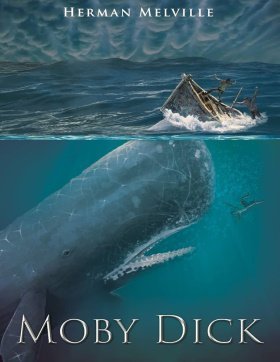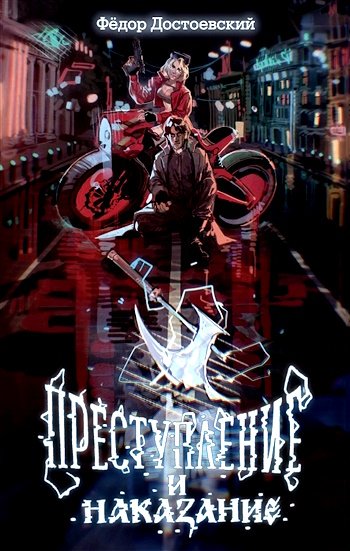Or what is there apart from the traditions of dungeoned warriors and kings (which will not wholly account for it) that makes the White Tower of London tell so much more strongly on the imagination of an untravelled American, than those other storied struures, its neighbors —the Byward Tower, or even the Bloody?
And those sublimer towers, the White Mountains of New Hampshire, whence, in peculiar moods, comes that gigantic ghostliness over the soul at the bare mention of that name, while the thought of Virginia’s Blue Ridge is full of a soft, dewy, distant dreaminess? Or why, irrespeive of all latitudes and longitudes, does the name of the White Sea exert such a speralness over the fancy, while that of the Yellow Sea lulls us with mortal thoughts of long lacquered mild afternoons on the waves, followed by the gaudiest and yet sleepiest of sunsets? Or, to choose a wholly unsubstantial instance, purely addressed to the fancy, why, in reading the old fairy tales of Central Europe, does “the tall pale man” of the Hartz forests, whose changeless pallor unrestingly glides through the green of the groves—why is this phantom more terrible than all the whooping imps of the Blocksburg?
Nor is it, altogether, the remembrance of her cathedral-toppling earthquakes; nor the stampedoes of her frantic seas: nor the tearlessness of arid skies that never rain; nor the sight of her wide field of leaning spires, wrenched cope- stones, and crosses all adroop (like canted yards of anchored fleets); and her suburban avenues of house-walls lying over upon each other, as a tossed pack of cards;—it is not these things alone which make tearless Lima, the strangest, saddest city thou can’st see.
For Lima has taken the white veil; and there is a higher horror in this whiteness of her woe. Old as Pizarro, this whiteness keeps her ruins for ever new; admits not the cheerful greenness of complete decay; spreads over her broken ramparts the rigid pallor of an apoplexy that fixes its own distortions.
I know that, to the common apprehension, this phenomenon of whiteness
is not confessed to be the prime agent in exaggerating the terror of objes otherwise terrible; nor to the unimaginative mind is there aught of terror in those appearances whose awfulness to another mind almost solely consists in this one phenomenon, especially when exhibited under any form at all approaching to muteness or universality. What I mean by these two statements may perhaps be respeively elucidated by the following examples.
First: e mariner, when drawing nigh the coasts of foreign lands, if by night he hear the roar of breakers, starts to vigilance, and feels just enough of trepidation to sharpen all his faculties; but under precisely similar circumstances, let him be called from his hammock to view his ship sailing through a midnight sea of milky whiteness—as if from encircling headlands shoals of combed white bears were swimming round him, then he feels a silent, superstitious dread; the shrouded phantom of the whitened waters is horrible to him as a real ghost; in vain the lead assures him he is still off soundings; heart and helm they both go down; he never rests till blue water is under him again. Yet where is the mariner who will tell thee, “Sir, it was not so much the fear of striking hidden rocks, as the fear of that hideous whiteness that so stirred me?”
Second: To the native Indian of Peru, the continual sight of the snow-howdahed Andes conveys naught of dread, except, perhaps, in the mere fancying of the eternal frosted desolateness reigning at such vast altitudes, and the natural conceit of what a fearfulness it would be to lose oneself in such inhuman solitudes.
Much the same is it with the backwoodsman of the West, who with comparative indifference views an unbounded prairie sheeted with driven snow, no shadow of tree or twig to break the fixed trance of whiteness. Not so the sailor, beholding the scenery of the Antaric seas; where at times, by some infernal trick of leger-demain in the powers of frost and air, he, shivering and half shipwrecked, instead of rainbows speaking hope and solace to his misery, views what seems a boundless church-yard grinning upon him with its lean ice monuments and splintered crosses.
But thou sayest, methinks this white-lead chapter about whiteness is but a white flag hung out from a craven soul; thou surrenderest to a hypo, Ishmael.
Tell me, why this strong young colt, foaled in some peaceful valley of Vermont, far removed from all beasts of prey—why is it that upon the sunniest day, if you but shake a fresh buffalo robe behind him, so that he cannot even see it, but only smells its wild animal muskiness—why will he start, snort, and with bursting eyes paw the ground in phrensies of affright? ere is no remembrance in him of any gorings of wild creatures in his green northern home, so that the strange muskiness he smells cannot recall to him anything associated with the experience of former perils; for what knows he, this New England colt, of the black bisons of distant Oregon?
No: but here thou beholdest even in a dumb brute, the instin of the know-
ledge of the demonism in the world. ough thousands of miles from Oregon, still when he smells that savage musk, the rending, goring bison herds are as present as to the deserted wild foal of the prairies, which this instant they may be trampling into dust.
us, then, the muffled rollings of a milky sea; the bleak rustlings of the festooned frosts of mountains; the desolate shiftings of the windrowed snows of prairies; all these, to Ishmael, are as the shaking of that buffalo robe to the frightened colt!
ough neither knows where lie the nameless things of which the mystic sign gives forth such hints; yet with me, as with the colt, somewhere those things must exist. ough in many of its aspes this visible world seems formed in love, the invisible spheres were formed in fright.
But not yet have we solved the incantation of this whiteness, and learned why it appeals with such power to the soul; and more strange and far more portentous—why, as we have seen, it is at once the most meaning symbol of spiritual things, nay, the very veil of the Christian’s Deity; and yet should be as it is, the intensifying agent in things the most appalling to mankind.
Is it that by its indefiniteness it shadows forth the heartless voids and immensities of the universe, and thus stabs us from behind with the thought of annihilation, when beholding the white depths of the milky way? Or is it, that as in essence whiteness is not so much a color as the visible absence of color, and at the same time the concrete of all colors; is it for these reasons that there is such a dumb blankness, full of meaning, in a wide landscape of snows—a colorless, all-color of atheism from which we shrink? And when we consider that other theory of the natural philosophers, that all other earthly hues—every stately or lovely emblazoning—the sweet tinges of sunset skies and woods; yea, and the gilded velvets of butterflies, and the butterfly cheeks of young girls; all these are but subtile deceits, not aually inherent in substances, but only laid on from without; so that all deified Nature absolutely paints like the harlot, whose allurements cover nothing but the charnel-house within; and when we proceed further, and consider that the mystical cosmetic which produces every one of her hues, the great principle of light, for ever remains white or colorless in itself, and if operating without medium upon matter, would touch all objes, even tulips and roses, with its own blank tinge—pondering all this, the palsied universe lies before us a leper; and like wilful travellers in Lapland, who refuse to wear colored and coloring glasses upon their eyes, so the wretched infidel gazes himself blind at the monumental white shroud that wraps all the prospe around him. And of all these things the Albino Whale was the symbol. Wonder ye then at the fiery hunt? With reference to the Polar bear, it may possibly be urged by him who would fain go still deeper into this matter, that it is not the whiteness, separately regarded, which heightens the intolerable hideousness of that brute; for, analysed, that heightened hideousness,
it might be said, only arises from the circumstance, that the irresponsible ferociousness of the creature stands invested in the fleece of celestial innocence and love; and hence, by bringing together two such opposite emotions in our minds, the Polar bear frightens us with so unnatural a contrast. But even assuming all this to be true; yet, were it not for the whiteness, you would not have that intensified terror. As for the white shark, the white gliding ghostliness of repose in that creature, when beheld in his ordinary moods, strangely tallies with the same quality in the Polar quadruped. is peculiarity is most vividly hit by the French in the name they bestow upon that fish. e Romish mass for the dead begins with Requiem eternam (eternal rest), whence Requiem denominating the mass itself, and any other funereal music. Now, in allusion to the white, silent stillness of death in this shark, and the mild deadliness of his habits, the French call him Re-quin. I remember the first albatross I ever saw. It was during a prolonged gale, in waters hard upon the Antaric seas. From my forenoon watch below, I ascended to the overclouded deck; and there, dashed upon the main hatches, I saw a regal, feathery thing of unspotted whiteness, and with a hooked, Roman bill sublime.
At intervals, it arched forth its vast archangel wings, as if to embrace some holy ark. Wondrous flutterings and throbbings shook it. ough bodily unharmed, it uttered cries, as some king’s ghost in supernatural distress. rough its inexpressible, strange eyes, methought I peeped to secrets which took hold of God.
As Abraham before the angels, I bowed myself; the white thing was so white, its wings so wide, and in those for ever exiled waters, I had lost the miserable warping memories of traditions and of towns. Long I gazed at that prodigy of plumage. I cannot tell, can only hint, the things that darted through me then. But at last I awoke; and turning, asked a sailor what bird was this. A goney, he replied. Goney!
I never had heard that name before; is it conceivable that this glorious thing is utterly unknown to men ashore! never! But some time after, I learned that goney was some seaman’s name for albatross. So that by no possibility could Coleridge’s wild Rhyme have had aught to do with those mystical impressions which were mine, when I saw that bird upon our deck. For neither had I then read the Rhyme, nor knew the bird to be an albatross. Yet, in saying this, I do but indirely burnish a little brighter the noble merit of the poem and the poet. I assert, then, that in the wondrous bodily whiteness of the bird chiefly lurks the secret of the spell; a truth the more evinced in this, that by a solecism of terms there are birds called grey albatrosses; and these I have frequently seen, but never with such emotions as when I beheld the Antaric fowl. But how had the mystic thing been caught?
Whisper it not, and I will tell; with a treacherous hook and line, as the fowl floated on the sea. At last the Captain made a postman of it; tying a lettered, leathern tally round its neck, with the ship’s time and place; and then letting it escape. But I doubt not, that leathern tally, meant for man, was taken off in Heaven, when the white fowl flew to join the wing-folding, the invoking, and adoring cherubim!
CHAPTER XLI.
HARK!
“Hist! Did you hear that noise, Cabaco?”
It was the middle-watch; a fair moonlight; the seamen were standing in a cordon, extending from one of the fresh-water butts in the waist, to the scuttle-butt near the taffrail. In this manner, they passed the buckets to fill the scuttle-butt.
Standing, for the most part, on the hallowed precins of the quarter-deck, they were careful not to speak or rustle their feet. From hand to hand, the buckets went in the deepest silence, only broken by the occasional flap of a sail, and the steady hum of the unceasingly advancing keel.
It was in the midst of this repose, that Archy, one of the cordon, whose post was near the after-hatches, whispered to his neighbor, a Cholo, the words above.
“Hist! did you hear that noise, Cabaco?”
“Take the bucket, will ye, Archy? what noise d’ye mean?”
“ere it is again—under the hatches—don’t you hear it—a cough—it sounded like a cough.”
“Cough be damned! Pass along that return bucket.”
“ere again—there it is!—it sounds like two or three sleepers turning over, now!”
“Caramba! have done, shipmate, will ye? It’s the three soaked biscuits ye eat for supper turning over inside of ye —nothing else. Look to the bucket!”
“Say what ye will, shipmate; I’ve sharp ears.”
“Aye, you are the chap, ain’t ye, that heard the hum of the old Quakeress’s knitting-needles fifty miles at sea from Nantucket; you’re the chap.”

























